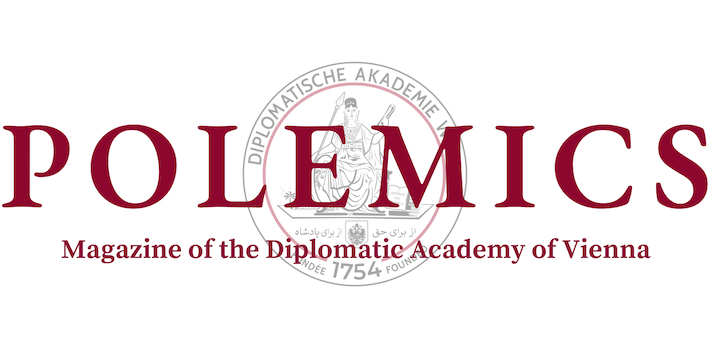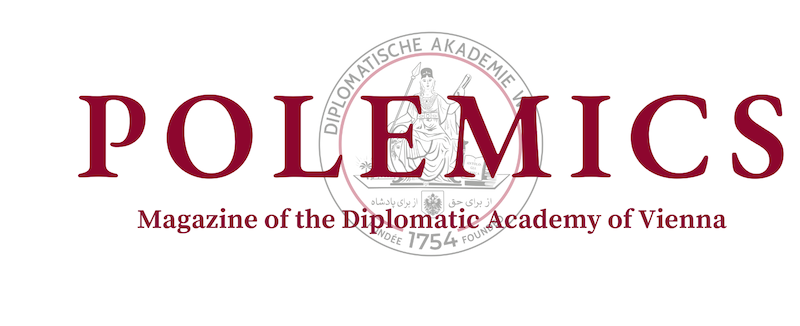Nuclear weapons are commonly considered one of the biggest threats to humanity. The father of the atomic bomb, Dr. Oppenheimer, even quoted: “I became death, the destroyer of worlds”. However, not everyone shares this perspective on nuclear weapons. While Dr. Oppenheimer called his invention “a weapon of aggression and terror”, early Cold War strategists, such as B. Brodie, argued the opposite. Nuclear weapons can be used for an aggressive attack, but only if the attacker is unconcerned about retaliation. In their view, the atomic bomb is a weapon of defence, establishing nuclear deterrence by punishment, making direct conflicts between nuclear states and their allies unlikely. B. Brodie even stated: “The key task of our armed forces in the past was to win wars. The key task now is to prevent wars.”
Nuclear Deterrence and Cold War Nuclear Stability
For effective deterrence, merely possessing nuclear weapons is insufficient: confidence should exist that a country can and will use its weapons if necessary. Should one nuclear country believe the other will not retaliate, deterrence collapses. However, even a slight risk of retaliation sustains deterrence, as no rational actor would risk annihilation. This confidence comes from advancements in nuclear capabilities and specific signals, such as doctrines, tests, exercises, and deployments. This dynamic defined the Cold War and remains relevant today.
During the Cold War, the US-Soviet stand-off had two dimensions: a nuclear arms race and a conventional forces competition, mainly in Europe. I will consider these aspects separately, starting with the nuclear race.
Initially, the US, enjoying a superior nuclear arsenal and geographic advantage, was more willing to consider nuclear war and maintained a first-use policy. Meanwhile, the USSR, lacking confidence in its nuclear forces, invested heavily to reach parity.
Soviet advancements in missile technology, demonstrated by the first satellite launch (1957) and Yuri Gagarin’s first human spaceflight (1961), secured its retaliatory capability. This led to the famous doctrine of mutually assured destruction (MAD), deterring both sides from a nuclear first strike. However, any loss of confidence in this deterrence could have increased nuclear risk, which is why both parties continued developing more sophisticated nuclear weapons and used a range of specific signals, such as tests, military exercises, and deployment of weapons in allied countries.
The US missile deployment in Turkey and Italy (1959–60) highlights nuclear signalling’s role. Soviet leadership was significantly concerned with US missiles, since the USSR, though a nuclear state since 1949, had not yet received confident second-strike capabilities. To ensure deterrence, Moscow retaliated by deploying its own missiles in Cuba as part of its signalling. The events culminated in the famous Crisis of 1962, as the US, now alarmed by Soviet missiles, took a range of military measures against Cuba. Fearing nuclear war based on the mutual uncertainty, Khrushchev and Kennedy de-escalated, withdrawing their missiles and starting bilateral and global nuclear arms control.
In the conventional stand-off in Europe, the Warsaw Pact had a significant numerical advantage, while NATO perceived itself as weaker. To counter this, NATO relied heavily on nuclear weapons. The Alliance’s nuclear signalling created uncertainty for the USSR, deterring a potential Warsaw Pact attack on Western Europe. Ultimately, mutual uncertainty over nuclear use, supported by respective signals, prevented direct conflict, making nuclear weapons a key factor in Cold War stability.
The Russia-NATO Case
The concept of confidence applies to the ongoing Russia-NATO confrontation, where Russian nuclear signalling has contributed to stability.
When military actions in Ukraine started on February 24, 2022, the West expressed harsh criticism of Moscow, including strong rhetoric. On that day, the French Foreign Minister reminded the public that “NATO is a nuclear alliance,” while a few days later, British Foreign Minister Liz Truss warned of a possible NATO-Russia war. In response, Russia placed its Strategic Forces on “special alert,” sending the first actual signal against any direct Western intervention.
Early in the conflict, Ukraine and some Western actors proposed the escalatory idea of a no-fly zone over Ukraine. While key NATO leaders rejected it, some Western politicians, such as the Prime Minister of Slovenia, and Parliaments of Estonia, Latvia and Lithuania (all mentioned countries are NATO members), lawmakers, academics, former officials – including high-ranking figures such as former Supreme Allied Commander of NATO General Philip Breedlove, supported it. Breedlove argued that a limited no-fly zone restricted to Western Ukraine, accompanied by precautions, would not trigger World War III. However, the fundamental problem remained that such an outcome could never be guaranteed.
As the conflict intensified, Western countries increased their military aid, supplying advanced weapons including missiles, tanks with depleted uranium munitions and nuclear-capable F-16 jets. Intelligence sharing, reconnaissance, and targeting assistance further deepened this involvement. Reports suggest covert Western specialists operated in Ukraine, and American military officers planned and controlled key Ukrainian offensives, including strikes on internationally recognised Russian territory—an unthinkable scenario during the Cold War. The West also shifted rhetoric, making Russia’s “strategic defeat”—a problematic term when applied to the largest nuclear arsenal in the world—an official goal, with some politicians even openly discussing the potential assassination of President Putin. Ultimately, the conflict became a proxy war of the US-led West against Russia, as acknowledged publicly by Secretary Rubio. Some indications, though impossible to independently verify, suggest that such deep US involvement raised the likelihood of Russia resorting to limited nuclear use by as much as 50%.
Russia responded to rising tensions with nuclear rhetoric and exercises, the suspension of New START, withdrawal of the CTBT ratification, arguing that the US had never ratified it, and the deployment of tactical nuclear weapons in Belarus—similar to US nuclear deployments in Europe. Sergei Karaganov, a prominent Russian academic allegedly linked to the security policymakers, even called for a pre-emptive nuclear strike against some Russophobic Eastern European country “to bring those who have lost their mind [Western politicians] to reason”, arguing that the US would never sacrifice “conditional Boston for conditional Poznan”. Though widely criticised in the West, these actions aligned with the core principle of deterrence: maintaining confidence in retaliation.
Some argue that since NATO’s key leaders consistently ruled out direct war, escalatory voices from low-profile individuals were irrelevant. However, without Russian responses to the escalatory actions, such as calls for a no-fly zone, arms transfers, and covert military involvement, there is no guarantee that NATO’s position on Ukraine would not shift, as the West might assume Russia’s weakness, potentially pushing NATO towards deeper involvement. In the worst-case scenario, this could lead to direct NATO-Russia confrontation, risking WWIII. Even though Russia possesses the world’s largest nuclear arsenal, it would be irrelevant if the West never believed Russia would indeed use it. That is why Russia reinforced its deterrence stance by intensifying its rhetoric and instilling uncertainty in Western officials, purely following deterrence theory. After all, military planning includes all, even “impossible” threats. For instance, in the 1920s–30s, the US developed “coloured” war plans against unlikely enemies like Canada and Britain.
During the Cold War, the fear of nuclear annihilation prevented direct US-Soviet conflict. Russia’s recent nuclear signalling has reintroduced this fear, reminding those unfamiliar with Cold War dynamics that nuclear weapons exist and can be used. Joe Biden and Donald Trump, both Cold War veterans, understand the deterrence logic and have consistently reaffirmed that the US would avoid direct war with Russia. However, younger European leaders appear to be less cautious. President Macron, for instance, stated that sending Western troops to Ukraine amid active conflict is “not ruled out”.
The Cold War lesson remains clear: nuclear deterrence, maintained through respective nuclear signalling, effectively prevents great-power wars. Russia’s nuclear signalling in the current crisis serves a similar stabilising function by reintroducing the same fear of nuclear weapons, thereby reinforcing deterrence.
Written by Ismoilbek Sarmusokov, Edited by Jolán Bogányi
Photo Credit: “Военный парад на Красной площади” (2017, May 9) on Kremlin.ru.








